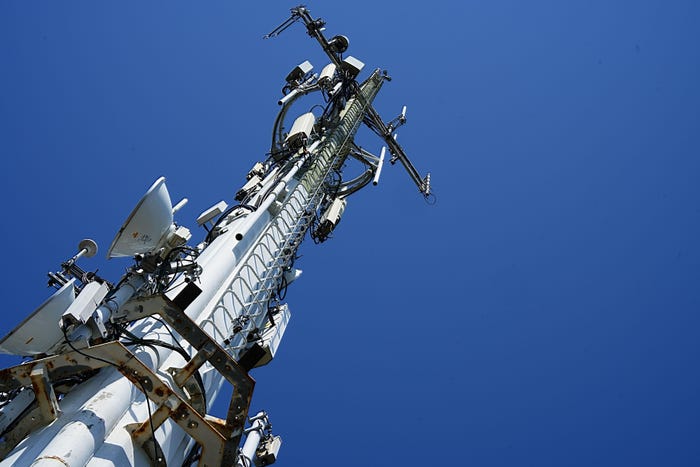Ericsson lops exabytes off stats and shows why telcos don't spend
The latest mobility report from the Swedish 5G evangelist makes downward revisions to earlier traffic data and paints a bleak picture of European 5G.

Tens of exabytes, enough data to fill many billions of DVDs, have mysteriously gone missing in Ericsson's latest mobility report. The November edition reckoned more than 140 exabytes flowed through the world's mobile networks each month during the third quarter of 2023. An updated chart six months on puts third-quarter monthly traffic at around 130 exabytes.
The data writedown comes after regulators and service providers in populous markets reported some depressingly low numbers for late 2023. But it affects Ericsson's numbers starting way back in 2022. Monthly traffic levels hit 100 exabytes in the second quarter of that year, says the November report. This threshold wasn't reached until the third quarter in the just-issued June update.
Ericsson, no doubt, wishes it were otherwise, but the rate of traffic growth is slowing. According to its November report, monthly data traffic was up 33% in the last third quarter, compared with the same part of 2022. The year-over-year rate for the recent first quarter was just 25%, it now says. At 145 exabytes, the level is only 6% higher than it was in the final quarter of 2023. A chart in Ericsson's June report shows the growth rate on a downward slope, like a San Francisco street, from the heights of 95% in 2018.
Note of desperation
One of the favourite pastimes for executives within telcos is moaning about "exponential" traffic growth. Those exabytes carry a substantial cost in equipment upgrades, they say, and customers, like diners at an all-you-can-eat buffet, aren't paying more for excessive indulgence (no one forced telcos to price data this way, critics point out).
But just as operators seem to loathe traffic growth for squeezing their margins, equipment vendors such as Ericsson rather like it. In the absence of other compelling reasons to invest in 5G products, they need traffic growth to justify their existence. A world of stable traffic is a world in which telcos buy network equipment only when their old boxes have grown rusty or become habitats for local wildlife.
There is, accordingly, a note of desperation running throughout the latest mobility report. It comes after first-quarter revenues fell more than a fifth year-over-year at Ericsson's networks business and nearly two fifths at Nokia's equivalent unit. Big telcos have become tight-fisted window shoppers at trade shows – interested in perusing the latest wares but with no desire to spend much on them.
After its apparent exabytes cock-up, Ericsson is defensive about its long-term forecasts, arguing that "the predicted mobile data traffic yearly growth rate between 2023 and 2029 remains similar, although from a lower starting point." Yet William Webb, an independent analyst and former executive at UK regulator Ofcom, anticipates an S-curve flattening in mobile data consumption by 2027 and says recent data aligns with the forecasts he made back in 2016.
"There is only so much data that a mobile subscriber can consume," writes Webb in The End of Telecoms History, a forthcoming book. "Once they are watching video for all their free moments while downloading updates and attachments there is little more that they could usefully download." Other analysts have similarly warned of the slowdown and its effect on the appetite for network investment.
Is there a more positive scenario? One possibility is that unforeseen mobile services spur traffic growth later this decade. On the consumer side, they could include extended reality (XR) applications and "AI-enabled tools," according to Ericsson's mobility report. But virtual reality goggles are unlikely to see much use outside fixed-line environments unless someone is trying to recreate the scene in Johnny English Strikes Again where a headset-wearing Rowan Atkinson stumbles outdoors, attacks a bakery worker with baguettes, launches someone off an open-top bus and causes general chaos in a London neighborhood. Nor will text- and voice-based AI services generate much extra traffic.
European misery
For Ericsson and Nokia, unfortunately, there is no great difference between 4G and 5G to average consumers, who would probably have no idea which technology serves them without monitoring the relevant smartphone icon. This means European telcos have no huge incentive to close the 5G gap with their peers in other parts of the world.
Besides ruminating about traffic growth, Ericsson's mobility report also shows Europe is far behind China, India and North America when it comes to 5G availability. Population coverage hit 90% for India and North America, and 95% for China, at the end of last year. Europe's figure was just 70%. The real gulf, though, is in the midband frequency range.
The rules of physics dictate that lower frequency bands are better for indoor and wide-area coverage, while bandwidth-rich higher ranges are more suited to fast connectivity. The midband clustered around 3.5GHz is the 5G sweet spot, the industry decided a few years ago. Signals here avoid the travel sickness that seems to affect much higher millimeter wave spectrum after a short journey. And there is enough bandwidth to support video services without congestion.
Yet midband 5G coverage in Europe was just 30% at the end of last year, according to Ericsson's mobility report. That compares with figures of 85% for North America, 90% for India and 95% for China. The growth opportunity for Ericsson is restricted to Europe, and Europe's telcos are not in the mood to spend. More advanced midband equipment is expensive, more sites are needed than in lower spectrum bands, customers will spend the same regardless and consumers don't seem to be missing out on services available in other parts of the world. Unless any of that changes, nobody should expect a European midband boom.
About the Author(s)
You May Also Like



.jpeg?width=700&auto=webp&quality=80&disable=upscale)










